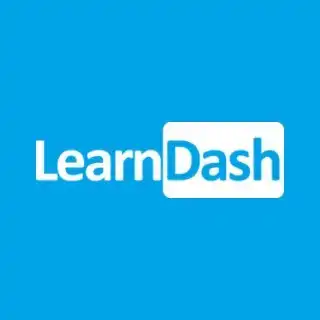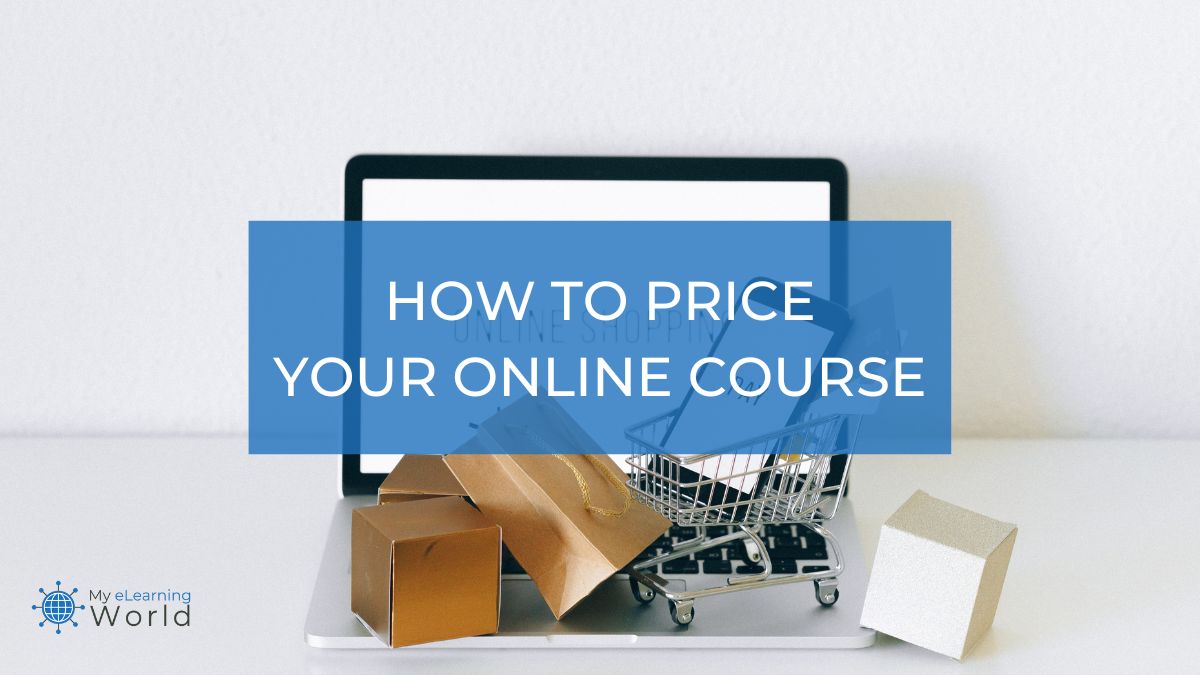You’ve created an online course, now it’s time to sell it! But here comes the tricky part of the course creation process — you’re not sure what to charge for it. Knowing how to price online courses correctly could be the difference between your course being a major success or a total failure. It could determine whether or not you get your piece of the fast-growing global eLearning market that’s worth hundreds of billions of dollars.
So how do you choose the right price for your online course? As someone who’s been in the eLearning space for nearly 20 years, I’ve put together an in-depth guide with everything you need to know about how to price your online course (side note – I highly recommend using LearnDash LMS if you’re still looking for a course creation platform).
10 Online Course Pricing Tips to Follow
With the tips below, you’ll know exactly how to price your online course to best boost your bottom line.
1. Do competitive research
Before you set a price for your online course, it’s important to do some competitive research.
What are other courses in your field charging?
What are the different online course pricing options that your competitors offer?
Not sure where to start with your competitive research? Check out online course marketplaces like Coursera and Udemy for a starting point.
Take note of how much other courses in your niche are charging on those marketplaces. Identify what the different pricing options are for those courses, and see what works best for you and your students.
Another thing I like to do is to Google “(your niche) + online course” and see what comes up. I find it helpful to make a spreadsheet of the different online courses in your field, along with their respective prices and offers.
2. Know your audience
One of the most important factors to consider when pricing your online course is knowing your audience.
What does your target market want and how much are they willing to spend?
Are they price-sensitive or are they willing to pay a premium price for a better online course?
Is your online course based around a hobby or is it something that will help them make more money in their career?
Are they entry-level or advanced in the subject?
All of these things are very important to know. Knowing your audience will help you choose the right price for your online course.
3. Consider the time and effort you’ve put in
In my experience, understanding the value of your time and effort is crucial when pricing your online course. You also want to factor in the length of your online course.
After all, you’re providing a lot of valuable information and you should be compensated for that.
How much is your time worth? How much would you charge for a one-hour consultation or live online training?
Multiply that by the number of hours you’ve spent on your course, and you’ll start to understand how to price your course so that you can make it profitable over time with the number of expected sales you’ll get.
Don’t forget to include the time it took to create any supplementary materials you’ve added into the online course, like worksheets, scripts, or templates (if you haven’t created these, I recommend doing so as they can be great value adds and can justify a higher price point).
All of this should be taken into account when pricing your online course.
4. Don’t neglect your marketing costs
Your expenses don’t end with creating your online course. You’ll also be spending money marketing the course to potential students. I’ve learned that while effective marketing can significantly boost course enrollment, it also adds to the overall expenses.
Start by estimating the total cost of your marketing efforts.
This includes any paid advertising (like Google Ads or social media ads), email marketing tools, content creation for marketing (such as promotional videos or blog posts), and any outsourcing costs if you’re hiring a marketing expert or agency.
For example, how much will it cost you to create a promotional video for your online course?
How much will it cost you to send out emails or postcards to promote the course?
How much money did your website to promote your online course set you back?
Will you be using a platform to manage all of the marketing automation for your course? That comes at a cost too.
All of these marketing expenses impact your bottom line, so you have to take them into account when pricing your course.
Once you have a clear understanding of your marketing expenses, adjust your course pricing to cover these costs while still remaining competitive and providing value to your learners. Remember, the goal is to not only recoup your marketing investment but also to make a profit.
5. Calculate the time and money your students will save from taking your course
If you’ve created a great course, your students will benefit from it in many ways, including potentially financially and in time savings.
As a marketer, it’s important to highlight this perceived value, putting a dollar value to it if possible to help justify your online course prices.
Here are some of the questions I recommend asking yourself:
How much money could they save or earn by applying the information taught in your course?
How much time will they save by taking your course and not having to search for information on their own?
When you calculate all of these benefits, it can help justify the price point for your course.
Make sure to highlight these savings in your marketing materials to entice potential students.
6. Add in the value of additional course materials included in your offer
I touched on it briefly earlier, but if you’re including supplementary materials in your online course, like templates, scripts, eBooks, whitepapers, or handouts, the value of those materials needs to be taken into account when pricing your course.
After all, you’re providing a lot of valuable information and you should be compensated for that.
When pricing your online course, you can either price it so that the materials are included in the cost or you can offer them as an upsell.
It’s important to decide how you want to handle this before you start marketing your course and laying out your pricing strategy.
7. Make sure the price is fair both for you and your students
When creating a pricing strategy for your online course, it’s important to make sure that the price is fair for both you and your students.
For you, it’s important to make sure that you’re compensated for the time and effort you’ve put into creating the course. You should also factor in any marketing expenses you’ve incurred, as well as the value of any supplementary materials you’re providing.
For your students, it’s important to make sure that the price is affordable and within their budget. They should also consider how much money they’ll save by taking your course instead of searching for information on their own.
It’s important to find a balance between these two factors when setting the price for your online course.
8. Offer discounts, bundles, and pricing plans
Once you’ve come up with your standard price for your online course, there are lots of other things you can do to mess with the pricing structure.
For example, you can offer discounts for early registration, for purchasing multiple online courses, or around certain holidays.
You can also bundle your online courses or other digital products together to create a great deal.
Another great option for pricing your course that I’ve tried is to come up with a payment plan for customers. This can make the online course more affordable for them and help you get paid in installments.
There are lots of ways to play around with your pricing, so be creative and see what works best for you and your students.
One of the great things about LearnDash LMS is you just choose your payment gateway and can then offer multiple pricing options, like selling your course individually or making it a monthly subscription.
9. Experiment with different prices
You should never assume your first attempt at course pricing is perfect. Believe me, it’s almost certainly not.
In fact, you should experiment with different prices to see what works best for your business.
Over time, you’ll see which price point strikes the perfect balance of maximizing your profitability while reaching students effectively.
Remember, don’t be afraid to change your online course pricing if it’s not working well for you or your students.
10. Track your analytics closely
As an instructional designer, I can tell you it’s always important to monitor your analytics closely so you can see how people are interacting with your course landing page and even your course itself.
This information will help you make necessary changes to your marketing and course content.
It will also help you determine whether the price you’ve set is too high, too low, or just right.
For example, if you have a heatmap tool on your site, you can see how people are interacting with your pricing information. If people scroll down your page and once they get to the price don’t click to order, that might be an indication that the price is too high for your online courses.
Course Pricing FAQ
What’s the average price for online courses?
There is no one answer to this question since the price for online courses can vary greatly. It depends on the length and topic of the course, how much work went into creating it, how many students are enrolled, and a variety of other factors. You’ll see full online courses ranging from as little as $50 all the way up to $1,000 or more.
Should I offer my course for free or for a fee?
This is a decision you’ll need to make based on a number of factors, including how much time and effort you put into creating your online courses, how much marketing expenses you have, and how much money you need to recoup your investment.
Can I change my course’s price after it’s been published?
Yes, you can change your course’s price at any time. You just need to make sure that the new price is fair for both you and your students.
Should I offer my course as a bundle?
There are a number of benefits to bundling your online courses together. It can help increase the average price per student and it can make it easier for students to buy multiple courses from you at once.
How often can I change my course’s price?
You can change your course’s price as often as you like, but it’s probably not a good idea to do it too often as it could deter potential students.
Should I offer a discount?
There are a number of reasons why you might want to offer a discount on your online course. You may want to incentivize potential students to enroll in your course, or you may want to test different price points to see what gets the best results.
Create and Sell Online Courses with LearnDash
 LearnDash
LearnDash
LearnDash is an easy-to-use platform that makes creating and managing online courses simple for WordPress users. With LearnDash’s drag-and-drop course builder, you can quickly create robust online courses with flexible pricing options, interactive features, and custom designs.
If you’re ready to create and sell an online course, having the right platform is crucial to bringing your vision to life.
LearnDash LMS makes it incredibly easy to create and sell courses, even if you’ve never made an online course before. It streamlines course creation, enabling you to focus on engaging learners and increasing revenue.
With LearnDash, you can easily integrate your courses into a WordPress site and take advantage of all the familiar WordPress features to enhance your educational content.
LearnDash offers a host of great features, including:
- An easy-to-use course builder with drag-and-drop functionality
- An AI-driven virtual instructor assistant for student support
- Issuance of badges and certificates to students
- Effortless assignment administration
- Advanced AI capabilities for course design, quiz generation, and more
- Diverse monetization options like pre-sales, one-time purchases, subscriptions, and memberships.
Click here to try a demo and discover how LearnDash LMS can work for you.
A Final Word
Choosing a course price can be a daunting task. There are so many different factors to consider, and it’s important to get it right so you can make a good return on your investment, especially if this is your first online course.
A lower price point might bring more students, while a higher-priced course could be more profitable depending on your audience.
There’s a lot to navigate with online course pricing.
The good news is you have time to try different things to determine what works best for you and your business.
Just make sure to track your data closely so you can course-correct as needed.
Have more questions on how to price your online course? Leave a comment below so I can help you out.


